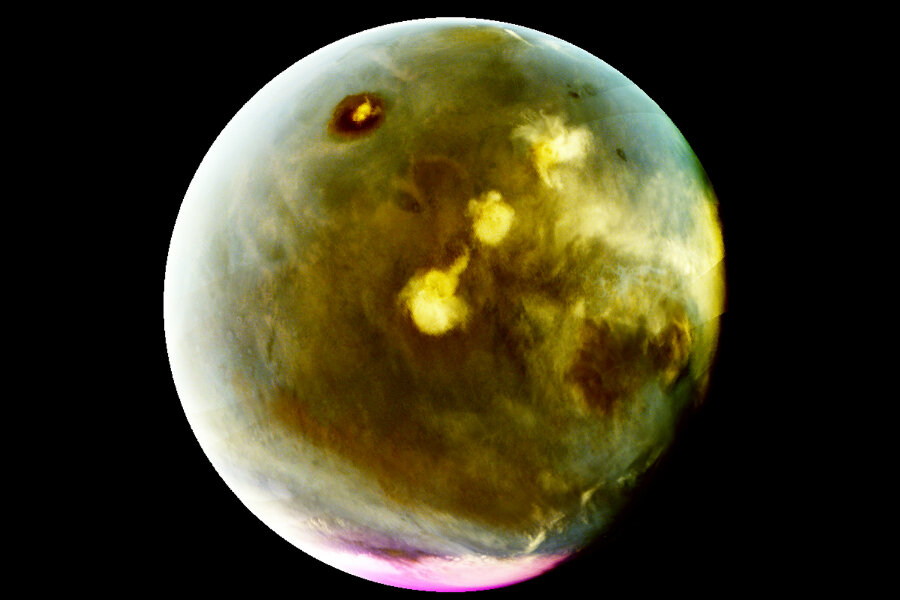NASA's MAVEN reveals hidden Martian processes through UV imaging
Loading...
Ultraviolet images from NASA’s Mars Atmosphere and Volatile Evolution probe (MAVEN) have allowed researchers to glean new insights about weather on the Red Planet.
The photos, taken by the craft’s Imaging Ultraviolet Spectrograph (IUVS), show dynamic ultraviolet radiation in the planet’s atmosphere. Researchers analyzed data from both sides of Mars – the side facing toward the sun, and the side facing away from it – to explain the formation of high-altitude Martian winds and clouds.
"MAVEN obtained hundreds of such images in recent months, giving some of the best high-resolution ultraviolet coverage of Mars ever obtained," said Nick Schneider, a space physicist from the University of Colorado, Boulder, in a statement.
The photos show “nightglow” emissions from the Martian atmosphere – a cosmic phenomenon that has been detected but never captured on the Red Planet. The process begins when ultraviolet light from the sun breaks down carbon dioxide and nitrogen molecules in the sunny side of the planet’s atmosphere. Wind patterns carry the separated atoms around Mars at high altitudes, before reaching the planet’s “nightside,” or shadowy half. Here, winds push the atoms closer to the planet’s surface, where nitrogen and oxygen atoms combine to form nitric oxide.
The reaction releases energy in the form of ultraviolet light. As a result, the planet’s night sky glows subtly, even in the absence of external light sources.
The images also show ozone levels from Mars’s “dayside.” Ozone is dissipated by water vapor, so the pale blue gas tends to accumulate at the planet’s frozen poles. And since ozone absorbs ultraviolet radiation, researchers are able to use UV as a proxy to analyze that accumulation.
Researchers say ozone concentrations at Mars’s south pole persist into spring, implying that Martian winds have prevented the spread of water vapor into polar regions.
The probe also snapped photos of clouds forming over Martian volcanoes, much as they would form over a mountain on Earth. Cloud behavior is a good indicator of energy flow and water vapor on the planet, researchers say.
MAVEN, for all its benefits to weather studies, was originally pitched as an astrobiology mission. Researchers hope that by examining the chemical effects of the sun’s radiation on Mars’s ionosphere and atmosphere, they will better understand how the planet, which may have once been habitable, became the barren rock it is today.
Dr. Schneider and colleagues will present their findings on Wednesday at the American Astronomical Society Division for Planetary Sciences meeting in Pasadena, Calif. The gathering will be held alongside the European Planetary Science Congress.








